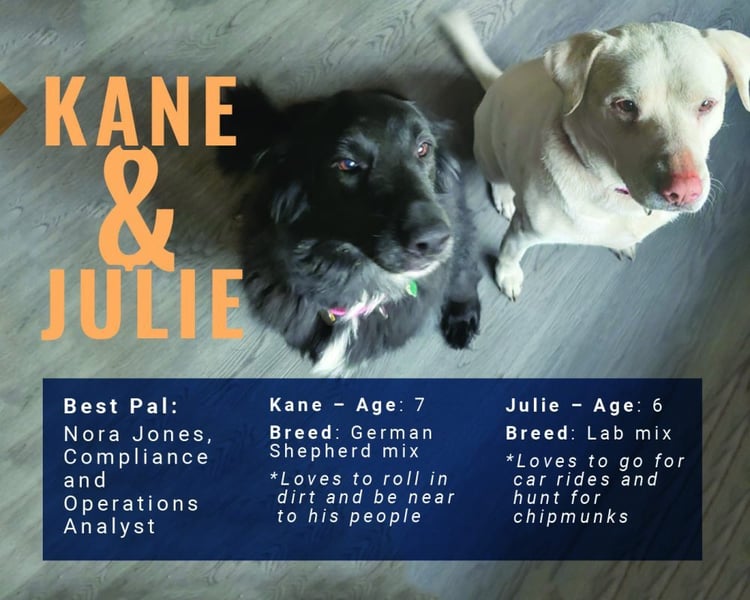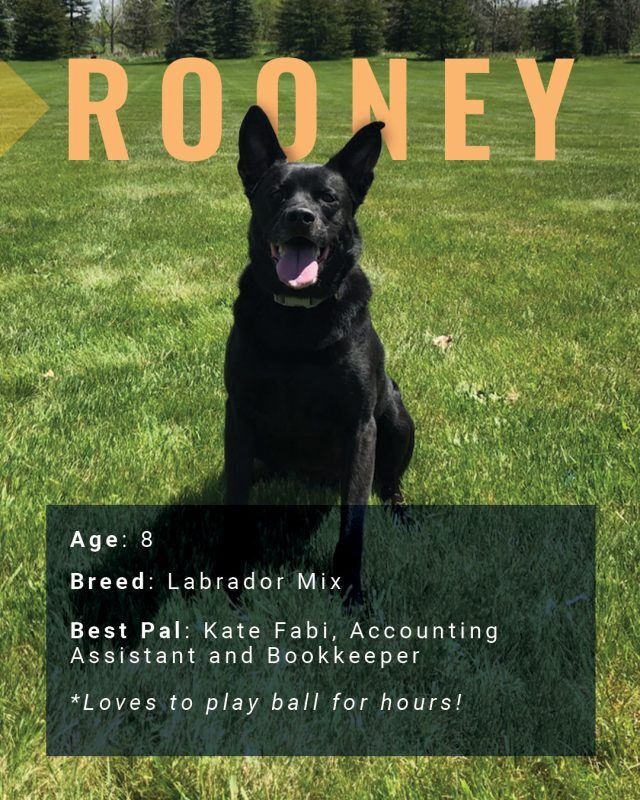MRA VP of Operations and General Counsel Tom Clement not only drafted the organization’s pet policy, but he’s testing it out with his dog. He explains what you need to know.
By: Shandra Martinez
During the pandemic, when people worked remotely, pet adoptions skyrocketed. As companies are bringing employees back to the office, many workers want to bring along their furry friends.
A growing number of companies are adopting pet-friendly policies. Research shows that pet-friendly workplaces can be happy and playful.
But having a pet-friendly office requires a policy that protects the safety of everyone, says Tom Clement, Michigan Retailers Association (MRA) vice president of operations and general counsel.
Not only did Clement help develop MRA’s policy but he’s testing it out with his own dog, a mini goldendoodle christened Midge after the lead character in the show “The Marvelous Mrs. Maisel.” He describes Midge as a relaxed, fun-loving 3-year-old.
At MRA, the first step in crafting a policy was checking with employees to see if they liked the idea. The focus should always be on the health and safety of employees and customers. In addition to this making good sense, federal and state occupational safety and health laws require employers to provide a safe workplace.
“It is fair to say that when adopting a pet policy that permits pets on the premises, the occupational safety laws are implicated and every caution should be undertaken,” Clement said.
Possible employer liability
An employer may be liable for a workers’ compensation claim if a pet injures an employee while they are working. This can be the case whether the employee is out in public, and injured by an animal he or she encounters, or in the workplace whether the animal is on the premises with or without permission. Workers’ compensation benefits can cover both lost wages and medical expenses.
Michigan also has a strict liability statute for dog bites that occur without provocation, subjecting the owner of the dog to “any damages suffered by the person bitten.”
A person injured by a dog while working may choose to pursue both a workers’ compensation claim and a civil tort claim against the dog owner. If, however, an injured employee recovers both in workers’ compensation and civilly, the employer can seek subrogation (reimbursement of workers’ compensation benefits paid to the employee) from the dog owner.
It is also important to note who owns the dog. If a dog belonging to the employer is in the workspace for purely social reasons, the employer could be subject to both workers’ compensation and general civil liability. An employer also has a potential liability if a third party visiting the business is attacked by the dog.
Steps to consider
So what should businesses consider when creating a pet policy?
A logical first step is to gauge whether allowing pets into the workplace is something you and your staff want. Are people excited, or simply accepting of the idea? Are there any employees who are afraid of animals and will be put in an uncomfortable environment? Are there any employees with significant allergies or other concerns?
A second step is a safety analysis. What kind of business do you have? Will the animal be around familiar faces once acclimated or will it be regularly faced with unfamiliar faces, especially members of the public? Is there anything that can pose a danger to the animal? How many people will the animal be around and how regularly?
A third step is to set parameters. If an animal has a history of aggressive behavior, it is not allowed. Misbehaving animals will be asked to leave. The pet owner is responsible for the animal’s needs and should be with the animal at all times. The owner should be sure their schedule permits availability to be with the animal. Clearly outline where the dog can and cannot go. This could include providing a pet-free zone for staff who don’t want to be around animals. Set a schedule so employees know when an animal will be on the premises.
“If the dog is disruptive or there are other issues, somebody from management is going to step in and say, ‘This just isn’t working.’ And, ultimately, we wouldn’t hesitate to pull the plug if the policy became problematic.
Testing it out
MRA’s offices in Lansing seem an ideal candidate for the experiment because it has a mid-size workforce, spread out over several floors, with occasional visitors. Employees are permitted to bring their dogs in at scheduled times and only one dog is allowed at a time.
“If you’re a true retail shop, you might have a dog that belongs to the owner or an employee and is always there and used to customers coming in and out,” Clement said. This may or may not work, depending on the dog’s disposition.
MRA is trying out allowing multiple dogs at different times and for short intervals. The policy requires that pet owners understand their responsibilities and adhere strictly to them. If their dog is not capable of handling a situation, they’re going to need to recognize that and avoid introducing the dog to the environment.
“Just because we write that down on the policy doesn’t mean it’s going to completely absolve us from any type of liability. We could still have workers’ compensation issues if the dog comes into the office and is misbehaving.” The policy is designed to limit those risks as much as possible. If the risks become too significant, employee and visitor safety will take priority.
Pets in the office can bring a lot of benefits, including better moods and increased productivity. The key to having a pet-friendly workplace that’s safe for everyone is making sure there’s a policy and everyone is following the rules.
And, who knows, you might be able to train the office dog to fetch the mail.
MEET SOME OF MRA’S PET-EMPLOYEES














